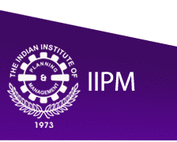Unlike their volume-driven Indian counterparts, foreign banks in India have been predominantly characterised by their limited presence across the nation. As on June 2009, 32 foreign banks comprising 293 branches, constituted a mere 0.5% of the total branch network. Riding on the competitive edge spelt by the use of high-end technology, a customer-centric approach and innovative, diverse product offerings, these banks have typically set shores in metropolitan regions (almost 80% as compared to 35% new Indian private banks, 20% old private banks & 20% PSU banks).
But the restricted spread has in no way limited the prospects for these players who have registered steady growth on all parameters. Despite the 0.5% share of the network, the market share stands at an impressive 6%. The 32 foreign banks cumulatively accounted for 5.5% of total system advances, 5.3% of system deposits, 18% of operating profit and 14% of system net profit in FY09. This is commendable given the low penetration. This is largely the result of an improving economic environment and pick-up in credit activities.
In contrast, the major factor that has adversely affected the foreign banks is their concentration on the retail segment, which was truly down and out during the downturn of the global financial crisis. The consequence is obvious – their loan book went up by a mere 3% while the Indian private counterparts saw a 12% rise during the same period. While the strong branding, better customer service & product innovation initially helped them make strong inroads into retail & SME lending, the resultant book seasoning turned a large part of these loans into NPLs, thereby resulting in higher provisioning & deterioration in asset quality.
The balance sheet story has been pretty obvious. While foreign banks outpaced its Indian peers (PSU & private banks) on all parameters including loans, deposits & CASA, the credit related activities took a beating, thanks to the downturn.
For more articles, Click on IIPM Article.
Source : IIPM Editorial, 2010.
An Initiative of IIPM, Malay Chaudhuri and Arindam chaudhuri (Renowned Management Guru and Economist).
For More IIPM Info, Visit below mentioned IIPM articles.
IIPM B-School Detail
IIPM makes business education truly global
IIPM’s Management Consulting Arm - Planman Consulting
Arindam Chaudhuri (IIPM Dean) – ‘Every human being is a diamond’
Arindam Chaudhuri – Everything is not in our hands
Planman Technologies – IT Solutions at your finger tips
Planman Consulting
Arindam Chaudhuri's Portfolio - he is at his candid best by Society Magazine
IIPM ranked No 1 B-School in India
domain-b.com : IIPM ranked ahead of IIMs
IIPM: Management Education India
Prof. Rajita Chaudhuri's Website
---------------------------------------------------------------------------------------------------------------


 RSS Feed
RSS Feed